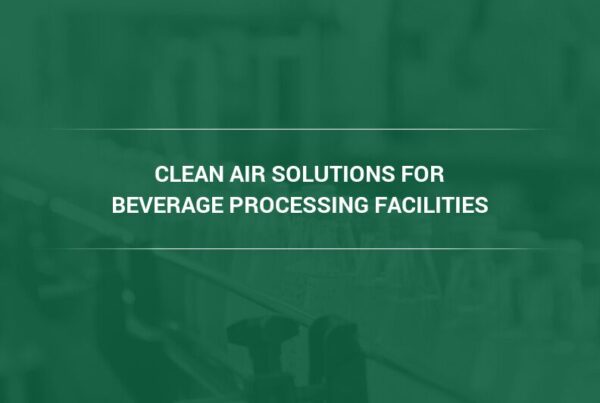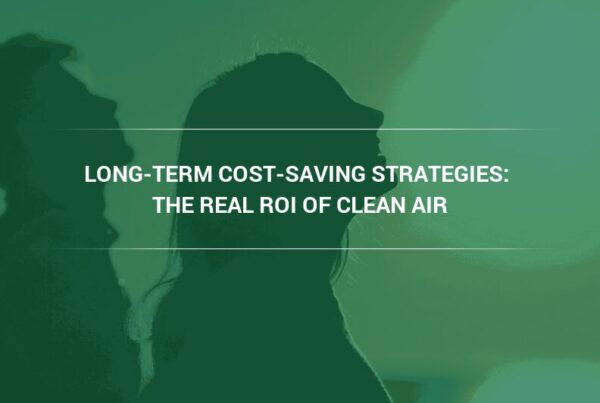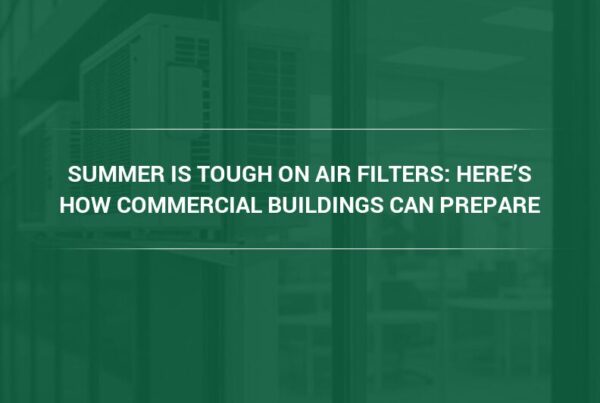To those who are new to shopping for commercial air filtration technology, the number of terms and phrases used to describe filters and related technology can be confusing. Some of the most confusing terms used in reference to commercial air filtration are air cleaners and air purifiers. How are the two terms used, and what are the differences between them if any? Knowing how the terms are used and what they refer to is important because without knowing what the terms mean, it is difficult to make informed decisions about purchases of commercial air filters and industrial air filtration units. Let’s explore air cleaners and air purifiers further.
The Difference between Industrial Air Filtration Units: Air Cleaners and Air Purifiers
“There are different kinds of industrial air filtration units, some are portable and some are part of HVAC systems within a building,” stated Camfil’s Charlie Seyffer, Manager of Marketing & Technical Materials and 37-year ASHRAE member and active committee participant. “When it comes to portable air purifiers, devices which remove harmful particles of pollution from the air, air purifiers may also be called air cleaners. There is no functional difference between air purifiers and air cleaners, and the terms may be used interchangeably.” (1)
Air purifiers and air cleaners are the same things and they both use powerful fans to circulate the air in a building through a filter. As for air filters, they are the components in the air cleaner that actually capture particles of pollution, cleaning the air. The filter traps particles of contaminated air pollutants, preventing them from being inhaled by the occupants of a building. By trapping these air pollutants within the filters, the devices are able to protect the health of a building’s occupants.
Portable Commercial Air Purifiers Absorb These Harmful Chemicals
Portable commercial air purifiers can trap a wide variety of harmful air pollutants. These pollutants include what the EPA has categorized as “Criteria Air Pollutants.” Criteria air pollutants are the air pollutants which are most abundant in the air and do the most damage to human health. The air criteria pollutants include ozone, volatile organic compounds, particulate matter, nitrogen dioxide, and sulfur dioxide.
“Ozone is a chemical that shields us from ultraviolet radiation when it is located in the upper atmosphere, but when ozone is at ground level, in the troposphere, it is a harmful pollutant and one of the key ingredients of smog,” says Seyffer. “Ozone is created by the interaction of automotive exhaust or volatile organic compounds (VOCs) with heat and sunlight. VOCs can be harmful by themselves, and refer to a variety of organic compounds released by the use of things like fossil fuels, cleaning agents, paints, and industrial chemicals.” (2)
Particulate matter (PM) pollution is one of the most dangerous kinds of air pollution. Particulate matter refers to small liquid and solid particles that float around in the air. The particles can be many times smaller than the width of a human hair, and at this size, they can penetrate both the lungs and bloodstream to do irreparable damage. Particulate matter can come from a variety of sources, yet one of the primary contributors to particulate matter air pollution is the combustion of fossil fuels.
Nitrogen dioxide and sulfur dioxide are both colorless gases released by fossil fuels and by industrial chemicals. Both compounds are capable of damaging the linings of the lungs, leading to the development of cardiovascular diseases and can exacerbate pre-existing conditions such as asthma.
Industrial Air Cleaners Protect People from Disease and Death
Diseases caused by ambient air pollution kill thousands and hospitalize millions of people every year. The most common diseases linked to air pollution include stroke, heart disease, chronic obstructive pulmonary disease, diabetes, asthma, lung cancer and lower respiratory infections. It is important for people to use industrial air filters and industrial air cleaners to protect their health against these diseases.
Coronary heart disease or ischemic heart disease is correlated with the buildup of calcium or fat within the coronary artery. The blockage in the arteries leads to heart damage because it prevents blood from reaching the heart and other regions of the body. Air pollution, particularly particulate matter pollution, is thought to increase the rate at which the arteries of the body are blocked. PM air pollution has also been correlated with strokes, which happen when the brain does not get enough blood and oxygen.
Chronic obstructive pulmonary disease (COPD) doesn’t refer to a single disease but instead refers to multiple diseases which make breathing difficult. Bronchitis and emphysema are examples of COPD, and both conditions can be caused by exposure to air pollutants like VOCs, sulfur dioxide and nitrogen dioxide. Infections of the lower respiratory system are usually related to pneumonia. Children are more vulnerable to infections of the lower respiratory system because their lungs and bodies are still developing. Nitrogen oxide and sulfur dioxide exposure have been linked to higher incidences of pneumonia.
Lung cancer is caused by the uncontrolled division of cells. Exposure to particulate matter, especially from sources like secondhand smoke, is known to increase a person’s risk of developing lung cancer.
Industrial HEPA Filters Remove 99.97% of All Air Pollutants
The filters that are most effective at absorbing particles of air pollution are referred to as industrial HEPA filters.
Industrial HEPA filters are capable of capturing 99.97% of all sub-micron size particles, preventing occupants of a building from inhaling them. HEPA filters are extremely useful in areas of the country exposed to high levels of air pollution. They may be less useful in cities with cleaner air, and if there isn’t a pressing need for a HEPA filter, a building may want to get by with a filter rated 8-13 MERV. This is because HEPA filters force HVAC systems to use more energy because of the additional fan power required to move air through them.
HEPA filters are available in both portable commercial air cleaners and as part of a building’s HVAC system.
Commercial Air Filtration Systems or Electrostatic Precipitators?
Not all commercial air filtration systems are created equal, and some commercial air cleaners are better at trapping harmful pollutants than other cleaners. Portable air cleaners that employ filters are the main type of cleaner, but there are other types of air purifiers as well. Other kinds of air purifiers include ion or ozone generators and electrostatic precipitators.
Ion generators, sometimes called ozone generators, work by reversing the charge of pollutants and causing the particles of pollution to stick to surfaces in a room, where they can be cleaned up. Yet these ozone generators often release ozone as a byproduct of their use, which can be dangerous to people’s health. Electrostatic precipitators do the same thing that ion generators except that they are designed to be installed within an HVAC system. They require frequent maintenance to maintain efficiency and may also produce ozone.
“The EPA recommends avoiding ion and ozone generators in the home because of the ozone they emit and the fact that they only work to clean small areas of a home,” says Seyffer. “To truly improve your health and reduce levels of indoor air pollution in your home, use air purifiers that have replaceable HEPA filters. You should also be sure to use them alongside traditional commercial air filters in HVAC systems.” (3)
Camfil USA can provide you with the right filters for your commercial air filtration needs and assist you in determining what kinds of portable air purifiers to purchase. Click here to contact Camfil USA today.
Sources:
- http://www.ebay.com/gds/Whats-the-Difference-Between-an-Air-Cleaner-and-Air-Purifier-/10000000177632771/g.html
- https://www.epa.gov/ozone-pollution/health-effects-ozone-pollution
- https://www.epa.gov/indoor-air-quality-iaq/ozone-generators-are-sold-air-cleaners



